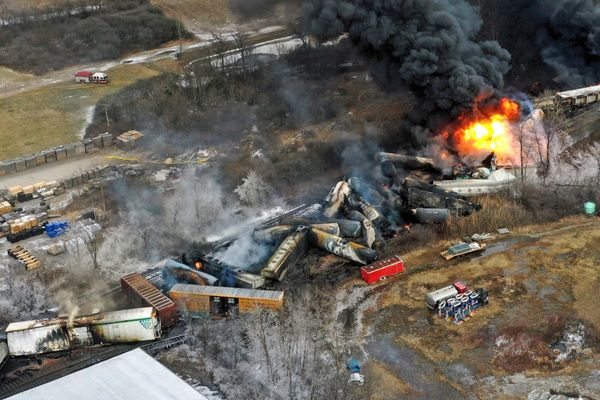
As two of Australia’s more contentious figures, Philip Lowe and Alan Joyce, head towards their gilded departure lounges, the economy seems set in a holding pattern with improving prospects of a desired soft landing.
To be sure, a happy outcome of a jobless rate remaining within cooee of 4%, wages finally catching – if not outpacing – inflation and even the federal budget staying in the black a bit longer is far from assured.
August and September may yet deliver an inflationary spurt. Automotive fuel will be a propellant rather than a drag on price increases, while electricity and gas costs probably have further to rise. A weaker Australian dollar won’t smooth inflation’s slide, either.
In its Tuesday decision to leave its interest rate on hold for a third straight month, the Reserve Bank noted many households were enduring a “painful squeeze” from 12 rate rises. China’s “ongoing stresses in the property market” fan global uncertainty too.
But short of a nasty surprise, the RBA’s rate-rising looks done. The labour market is “tight” – rather than “very tight” – and the economy is slowing but not stalling, it said.
Wednesday’s release of national accounts by the Australian Bureau of Statistics should reinforce that promising outlook.
June quarter GDP growth likely quickened from the 0.2% pace in the previous three months. The annual pace may ease to perhaps 1.8% from 2.3% in the March quarter – a velocity aided of course by a swelling population but at least not near zero.
Commodity prices that have done much to bolster profits, dividends and royalties in recent decades retreated in the June quarter by 7.9%, or the most for terms of trade in 14 years.
However, the volume of net exports rose $4.5bn in the quarter, the ABS reported on Tuesday, adding a surprisingly large 0.8 percentage point uplift to quarterly GDP growth. And China’s scattergun effort to revive consumer and business confidence has lately hit a few targets, lifting investor hopes (perhaps fleetingly).
The pipeline of Covid-prompted government spending is still providing economic buoyancy. New public demand rose 1.3% and is expected to contribute 0.5 percentage points to June quarter GDP growth, St George economists calculate.
The trade and public spending data helped balance out falling inventories and household spending, reported by the ABS on Monday. The latter drags underscored why most economists anticipated the RBA’s pause extension.
Job advertisements have lately perked back to April’s bullish levels. Consumers too might be emerging from under their winter doonas.
Consumer sentiment continues to edge up and is now back to April levels (although still low, historically). (Source: @ANZ_Research, @RoyMorganAus ) pic.twitter.com/pVvcEf6QlB
— @phannam@mastodon.green (@p_hannam) September 5, 2023
The weekly consumer confidence survey from ANZ and Roy Morgan is just one snapshot spotting improving sentiment – albeit from recessionary lows – as households stop bracing for more ill tidings.
“The start of what we think is an extended pause from the RBA could also be flowing through” to sentiment, the ANZ senior economist Adelaide Timbrell said. “The four-week average confidence level for outright owners is steadily increasing while those paying off their mortgage are seeing confidence stagnate at a lower level than renters and outright owners.”
Those owners, who account for about a third of households, are reasons to feel more spend-thrifty.
National housing prices have risen six months in a row to August, according to CoreLogic, and that up arrow was partly why the RBA viewed consumption projections as uncertain. “Substantial” savings buffers and higher interest income might also explain why uncertainty might break in a positive way.
While life is full of uncertainties, the fact some 800,000 borrowers have long known they were heading for a “mortgage cliff” in 2023 gave them (and their lenders) ample time to reduce their risk of plunging over.
July clocked up $14.6bn in refinancing by owner-occupiers, another record, the ABS said last week. Shopping around is clearly popular.
Michele Bullock, Lowe’s successor as governor, may yet want to strut her inflation-fighting bona fides with an early rate rise when she takes over on 18 September.
But short of that, or some unexpected economic gust, Australia’s economy might be about where Lowe wanted it to be.







